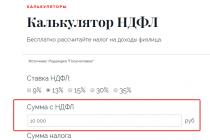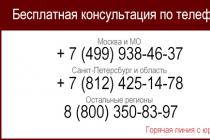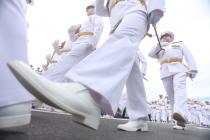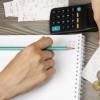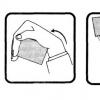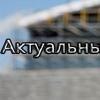Class: 2
Target: consolidation of knowledge about vowels of the 2nd row, their softness functions in front of the standing consonant.
Tasks:
- consolidate knowledge about the significance of vowels of the 2nd row to indicate the softness of the sound.
- exercise in finding and naming hard and soft consonants in syllables and words.
- correct the work of the visual-auditory analyzer in exercises for determining the vowels of the 2nd row, the soft consonants in front of them.
- develop thinking, attention when working with sentences and text.
- contribute to the formation of coherent, expressive speech.
- continue to develop learning skills, self-control skills.
Material: table of sound symbols of vowels of the 2nd row (I - ya, E - yo, E - ye, Yu - yu); a table with vowels 1 and 2 rows in pairs (A-Z, O-E, E-E, U-Yu, s-I); cards with words (happy - row; nose - carried; bow - hatch; soap - mil); hourglass; signs “+”, “-”, “tick”.
For each child: lined notebooks; cards with syllables, words, text; pencils (red, blue, green); "five".
Lesson progress
“Roll call” - the one who calls himself by name sits down.
What vowels did we talk about in the last lesson? (Vowels of the 1st row: A, O, U, E, s) How did we pronounce them? (Hold out and sang) What consonants are in front of these vowels (Solid) Remember and name the syllables with vowels of the 1st row.
The speech therapist teacher reports the topic of the lesson: “Vowels of the 2nd row”; the purpose of the lesson is to consolidate knowledge about vowels of the 2nd row, their influence on the consonant in front of them, about one of the ways to soften consonants.
Vowels of the 2nd row consist of two sounds (a table with sounds is shown). We will agree that we will not pull these sounds like stupid little donkeys. We will name the vowels of the 2nd row briefly and clearly: “I, E, E, Yu”. (He calls the speech therapist teacher, then the children.) Which vowel from the 2nd row can be extended and even sung? (vowel “I”).
A table is entered with vowels of the 1st and 2nd rows. Children call the vowels of the 1st row, stretching them out, 2nd rows - briefly, clearly. Then the speech therapist teacher reads the poem, the children call the vowels in pairs. Once again, attention is drawn to the fact that the vowels of the 2nd row “I, E, E, Yu” are called shortly, clearly, without stretching them out.
- We call the letter “A”, and the girlfriend’s letter is “I”,
- We draw the letter “O” with you, and the girlfriend draws the letter “E”,
- The letter “U” sang a song, and “Yu” answered her,
- We sang the letter "E", and in response we hear "E",
- And with the baby, the letter “y” pulls the song with the letter “I”.
Work in notebooks. Remind children about posture when doing assignments in notebooks.
The speech therapist shows cards with words written in pairs (happy - row; nose - carried; bow - hatch; soap - nice), offers to listen to two words on the first card; set their value; determine the nature of the sound of consonants; to clarify that the vowel of the 2nd row is used to indicate the softness of consonants.
I will say two words, and you think how they differ: glad - a row.
What is rad? What is a row? So these words have different meanings.
And what else? How do the first consonants sound? "HAPPY" (pause).....hard. Name the sound (“R”). Let's write this word. Read what happened: ....... RAD. (Vowels are highlighted in color, hard, soft. It is specified that red is used to indicate vowels, blue is used for hard consonants, and green is used for soft consonants.)
And now we need: "ROW". Name the first sound (“Pb”). After “R” we write the letter ....... “I”. Let's write this word. Read what happened: ....... "SERIES".
In our word “row”, the vowel of the 2nd row “I” serves ......... to soften the sound “R”.
Similarly, work is carried out with pairs of words “nose - carried; bow - hatch; soap - nice. Children make up sentences with these words.
What are the vowels of the 2nd row for? (Vowels 2 rows are needed to soften the consonant in front of it).
There are two ways to indicate the softness of consonants in writing. The first way: using the vowels of the second row “I, e, e, u, and”. The second - ?........ We will talk about it in the next lessons.
Game exercise "Captains". Children perform movements only if the speech therapist gives the command “Captains”. (For example, “Captains, clapped their hands!” - is performed; “They stamped their foot!” - no, etc.)
Tasks on cards.
No. 1 GA, GYA, RO, RE, NYA, NA, ZY, LA, SI, TYU, PO, FY, VE, DYA, BYU, WE, SHU, SA, HI, DU, NYA, BE, RY, PYU, KO.
No. 2 SLED, REBUS, CIRCLES, CRANBERRY, SPOT, DRIVER, BUCKETS, GRAIN, HOOK, LITERS
No. 3 Friends.
Kolya got sick. He lay in bed and looked out the window. Suddenly he saw a green ball. A face was painted on the balloon. Kolya guessed what the guys came up with. Then Lyuba, Seryozha and Tima came. They brought a picture book. Kolya got better.
Task number 1. Reading syllables, circling syllables with only vowels of the 2nd row, softening the consonants in front of them.
Speech material: ha, GYA, ro, RE, NYA, na, sy, LA, SI, TYU, po, fu, VE, DYA, BYU, we, shu, for, HI, so, NYA, BE, ry, PYu , ky.
Children name syllables with soft consonants. The speech therapist teacher re-names the syllables, the children - the vowel of the 2nd row and the soft consonant in the syllable.
Then the children put a “+” sign if they liked the task and coped with it easily; a “-” sign if it was difficult or the task was not liked; “tick”, if not everything turned out, there were errors.
Oral task: the teacher-speech therapist calls words, and the children syllables with vowels of the 2nd row and soft consonants in front of them: RU-KI, GRI-BY, MAR-KI, DOS-KA -!, KLYAK-SA, TABLE -!, TUF-LI, YU-LA -!, KOS-TER, RAIN-DI, YAB-LO-NYA, ZEB-RA, ZON-TIK, BET-LA.
For the development of attention, thinking, children are given “provocative” variants of words (there is a vowel of the 2nd row, but there is no consonant in front of it; there are no vowels of the 2nd row and soft consonants).
After completing the task, the children put the signs “+”, “-” or a tick on the cards.
Task number 2: write down 5 words by syllables, circle the vowels of 2 rows in red, underline the soft consonants in front of them in green.
LEAD, REBUS, CIRCLES, CRANBERRY, SPOT, DRIVER, BUCKETS, GRAIN, HOOK, LITERS.
After completing the task, the children put the signs "+", "-" or a checkmark.
Fizkultminutka.
- Option 1: children perform arbitrary movements to cheerful music.
- Option 2: children perform movements in accordance with the text, pronouncing the words.
We kick top - top,
We hands clap - clap!
We eyes a moment - a moment,
We shoulders chik-chik.
One - here, two - there,
Turn around yourself.
Once - sat down, two - got up.
Everyone raised their hands up.
One - two, one - two
It's time for us to get busy!
Task number 3. Working with text:
Expressive reading of the text by a speech therapist teacher, children determining the number of sentences, words in sentences (attention is drawn to “small” words - prepositions);
Reading the text by children (it is possible to offer reading according to the sentence - “chain”, at the choice of the reading student by the teacher-speech therapist);
Reading sentences proposed by a speech therapist teacher or at the choice of the students themselves with different intonation.
Attention exercise: children find 2 rows of vowels in the text, circle them in red (you can suggest underlining the soft consonants in front of the vowels with a green pencil). The teacher uses an hourglass so that the children can control the time of the task.
Kolya got sick. (2) He lay in bed and looked out the window. (8) Suddenly he saw a green ball. (5) A face was painted on the balloon. (5) Kolya guessed what the guys came up with. (6) Then Lyuba, Seryozha and Tima came. (6) They brought a book with pictures. (5) Kolya felt better. (3)
After completing the task, the children exchange cards, check the tasks with each other, then put the signs “+”, “-” or a tick on their cards.
Summary of the lesson.
What are 2 row vowels for? (Vowels 2 rows are needed to soften the consonant in front of them.)
How did we agree to name the vowels of the 2nd series? (Short, clear, without stretching)
What tasks did you find difficult? Can you say that you did a good job today. Why?
Children receive "five" for diligence, active work in the classroom.
After the lesson, when checking the performance of tasks by children and the signs they put down (“+”, “-”, “tick”), the speech therapist analyzes the level of development of control and self-control skills.
Isolation of first row vowels from words
L.V. Shapovalova
Topic: Isolation of first row vowels from words.
Target : to form the ability to distinguish vowels of the 1st row from monosyllabic words.
Tasks: to teach to analyze and differentiate the acquired knowledge by highlighting the necessary information and systematizing it; improve the grammatical structure of speech and coherent speech;
correct auditory perception based on exercises in isolating vowel sounds from monosyllabic words; develop long-term memory, specifically - effective thinking, communicative competence;
develop motivation for learning.
Equipment : subject pictures, colored and pencils, mirrors, notebooks, alphabet books, sand, blue and red chips, colored stripes, flower - seven-color, speech therapy mirrors, didactic material.
Plan and course of the lesson.
I. Preparatory stage.
1. Organizational moment.
What's happened? What happened?
Why is the bell ringing?
We are ready. The table is fine.
Lesson begins...
We will respond actively
To behave,
So that dear guests
Would like to come back!
2. Psychological attitude.
First, let's see how you came to class. And multi-colored petals will help you with this. Choose a petal color that suits your mood. By composing a flower, we can understand our mood.
Color language:
Yellow, orange - cheerful, playful, joyful;
Red - good, cheerful mood;
Green - laziness and indifference;
Blue - calmness;
Purple - sadness, anxiety;
Black is sadness.
Kids, everyone is different.
II. Main stage.
Articulation gymnastics.
2. Guess riddles
On the face of a mountain
It has two windows.
(n O With)
shoemaker, no shoemaker
Tailor, not a tailor
Scissors in hand
And in the mouth - a bristle
(R a To)
I am very tasty and useful,
Can I lie on the table
I can run into my mouth
(With s R)
I don't buzz when I lie down
I don't buzz when I walk.
If I spin in the air
Here I'll get bored
(w at To)
What kind of teaser is this?
I call: "Natasha!"
And he shouts: "Ashka!"
I call "Seryozha"!
And he shouts: "Hedgehog!"
I'm screaming "Aw!"
And he growls: "Whoo!"
( uh ho)
Look at your reflection in the water.
Hanging branches from a cliff
Tender, sad.... (willow)
(On the board are subject pictures - guesses).
For the correct answer, the child receives a picture - a guess.
Name your picture, emphasizing the vowel with your voice. (F - uuuuu - to,
n - oooooh - s, r - aaaaa - k, s - yyyyy - r)
3. Communication of the topic and purpose of the lesson.
Questions for each child:
What needs to be done to pronounce the sound [U]?
What needs to be done to pronounce the sound [O]?
What needs to be done to pronounce the sound [A]?
What needs to be done to pronounce the sound [ы]?
Show the articulation of each sound without a voice.
Prove that A, O, U, Y are vowels.
When pronouncing the air stream does not meet obstacles.
These are the sounds of the first row. How do they sound?
What letter is missing here? Why?
Say the vowel sounds briefly, abruptly: A. O. U. S. E.
And now drawlingly: A ___ O ___ U ___ E ___ S ___
4. Comparison of sounds with their graphic representation - work with the alphabet:
Children, I will read you poems about vowels of the 1st row, and you show these letters in the alphabet.
letter in the air
On the palm
On the neighbor's back.
A - the beginning of the alphabet, so she is famous.
And it’s easy to recognize her, she puts her legs wide.
LetterO always stood round, normal,
She lay down to sleep, rumpled her sides. And now oval!
At - the snail on the path boldly released its horns,
Get out of the way, don't let the house go.
And the poor letterS ,
Wandering with a wand, alas!
This -E with open mouth
And with a big tongue.
5. Game for attention.
What sounds did not have tongue twisters?
A - A - A Mom sang.
A - A - A sang the baby.
A - A - A - sing for the doll.
A - A - A And the doll is sleeping.
Y - Y - Y - pumpkin, beads and mustache.
E - E - E
Emma and Edik went to the cinema and bought popsicles.
6. Letter of vowels of the 1st row.
Write the letter corresponding to the vowel sound in the words: MAC, CATFISH, CAT, BULL, BOW - individual work.
(Children write letters with their fingers: A, O, S, U on a saucer with sand)
7. The game "Clap top"
O - clap your hands, U - stomp your foot, A - clap and stomp at the same time.
Pictures: wood, closet, wolf, bow, elephant, crab table.
8. Work with picture material.
(on the table there are pictures with one, two vowels: house, poppy, cat, bow, book, clock, geese, etc.)
Choose pictures whose names contain one vowel sound.
Say the word, highlighting the vowel (stretching) and name it and write it down in your notebook.
9. Game exercise "Fun Gymnastics" - attention.
You listen carefully to my instructions and follow them exactly:
Raise your hands up;
Lower your right hand down;
Put your left hand on your belt;
Lower your hands down;
Turn right;
Look left.
10. Expansion and refinement of the dictionary.
On the table you have subject pictures, first select the pictures that start with the sound A, (O, U) we work in pairs.
Note that there is a stone on the table. Who knows what it is?
What sound is this word?
What is "coal", as you understand?
Where is coal mined?
We live in the DPR and coal is the main wealth of our republic. And our flag has a black color, which symbolizes the fertile land and coal of Donbass.
What other colors are on the DPR flag?
Donbass is our motherland and we love it. What can we wish the people of Donbass.
The people of Donbass have a sky without clouds,
A ray of sunshine for the people of Donbass.
To the people of Donbass peace, kindness,
Let this war stop!
Name the vowels in the word "Donbass". What do they stand for?
11. Exercises in color refinement.
Take blue and red pencils.
What do we represent in blue? Red?
12. Reading a combination of vowels of the 1st row.
ueoya woway aoye oaw ia woah
You noticed that there are real words here, name them.
13. Work with the word scheme [D], [O], [M].
How many sounds are there?
How many letters are in a word?
How many vowels?
Where is the vowel located?
14. Physical Minute. "HOUSE"
HOUSE - children stand straight, hands in the castle behind their backs;
HOUSE - children squat, hands clasp their knees, tilt their heads;
HOUSE - they jump up, pull their hands high up.
The lexical meanings of the words are specified: HOUSE, HOUSE, HOUSE.
15. Working with alphabets.
c) from the alphabet to make the word HOUSE
Replace [O] with [S]. Read.
Explanation of the lexical meaning of the word SMOKE.
Replace [Y] with [A]. Read
Write down in a notebook. Mark the vowel with a red pencil.
16. Gymnastics for hands.
Cam - rib - palm.
17. Exercise in making proposals.
Guys, the words we utter by themselves do not say anything, do not tell. For example, the word "house". We can say it many times, but we will never know what kind of house it is (high or low, new or old), where it stands (in a city or village), who lives in it. In order for the owl to begin to talk, they must make friends with each other. For example, "The workers built a new house." From friendly words, an offer was made.
Tell me what you learned about the house?
Who built the house?
What is this house?
Make sentences with the word "house".
(The house is big and beautiful. The house stands on the banks of the river. A friendly family lives in the house.)
Offers can also be friends. That's how the story turns out.
Retell the story about the house.
Tell me, would we have words without vowels? Offers? Story?
ІІІ. The final stage.
Outcome.
Did you enjoy the activity?
What do you remember about it?
Now let's see what mood are you in?
2. Evaluation of the activities of each student.
Dokuchaevskaya secondary school No. 27 of the Ministry of Education and Science of the DPR
Emphasis of the vowels of the first
row of words.
open speech therapy session
Grade 2
Prepared by: teacher - defectologist
L.V. Shapovalova
2017 – 2018 academic year year.
In Russian there are 10 vowels, 6 vowels. Vowels: a, i, e, e, o, u, s, e, u, i. Vowel sounds: [a], [o], [y], [e], [and], [s]. In the school curriculum, vowel sounds are indicated in the diagrams in red. In elementary grades, they explain: vowels are called so because they “voice”, they are pronounced “voiced”, while consonants got such a name because they “agree” with vowels.
Scheme 1. Vowels and vowel sounds of the Russian language.
Stressed and unstressed vowels
Vowel sounds are:
- drums: juice [o] - ice ['o], forest ['e] - mayor [e], drill [y] - hatch ['y],
- unstressed: in O yes [a], s at duck [y], l e juice [and].
Note. It is correct to say "stressed syllable" and "unstressed syllable". Instead of "stress falls on a vowel" say "stress falls on a syllable with a vowel." However, in the literature there are formulations "stressed vowel" and "unstressed vowel".
Stressed vowels are in a strong position, they are pronounced with more force and intonation. Unstressed vowels are in a weak position, they are pronounced with less force and may be subject to change.
Note. The designation of the letter e in a weak position differs in different school programs. Above, we showed the sound [and], in other school programs the designation [e] is found, in the institute program - [e and] (e with an overtone and).
In Russian, there are compound words with primary and secondary stress. In them, with a strong intonation, we highlight the main stress, with a weak intonation - a secondary one. For example, in the word foam blocks, the main stress falls on the syllable with the letter o, the secondary stress on the syllable with the letter e. In phonetic analysis, the vowel with the main stress is stressed, the vowel with the secondary stress is unstressed. For example: tricuspid, three-year-old.
Iotated vowel sounds
The letters i, u, e, e are called iotated and mean two sounds in the following positions of the word:
- at the beginning of the word: tree [th "olka], Yana [th" ana], raccoon [th" inot];
- after the vowel: hare [hare "its], button accordion [bai" an];
- after b or b: streams [ruch "y" and], rise [fall "om].
For ё and stressed vowels i, u, e, a replacement is made: i → [y'a], yu → [y'y], e → [y'e], yo → [y'o]. For unstressed vowels, a replacement is used: i → [th "and], e → [th" and]. In some school programs, when compiling a transcription of a word and during phonetic analysis, they write Latin j instead of th.
SPEECH THERAPY CLASS
with students of the 2nd grade who have writing and reading disorders due to the lack of formation of the skill of analysis and synthesis
Topic:
Vowels I and II series.
Target:
clarify the similarities and differences between vowels of the I and II series.
Tasks:
1) introduce the sound composition of vowels of the II series; 2) develop phonemic perception; 3) develop the skills of language analysis and synthesis; 4) teach to draw conclusions, listen and understand others; 5) develop memory, attention and thinking.
Course progress.
1. Organizing moment. -Today we are going to the Land of Sounds. What can you travel on? (example children's answers: by car, bus, plane, etc.) And we will travel in a hot air balloon. In order for the ball to rise into the air, we must perform the exercises (performing brain gymnastics): - “Lazy figure eight” (draw a recumbent figure eight in the air with the left hand, then with the right, then with both). - “Cross movements” (touching the opposite knee or foot with a brush or elbow) - “Ring” (fingers of the right hand, then the left, together). 2. Repetition. - So, we flew to the land of sounds. To land, we need to answer the following questions: - What two groups are divided into all sounds in Russian? (vowels and consonants) - What sounds are pronounced without barriers? (marked in red). - What with a barrier? (marked in blue or green). What is the difference between a sound and a letter? We pronounce the sounds clearly, We listen carefully, we read the letters correctly, We write them diligently. 3. Explanation of the new topic. The speech therapist tells a story. In parallel, records are kept in notebooks and used). - So, a ball is announced in the Land of Sounds. Sounds gathered in different halls. In one, consonants are having fun, and in the other, vowels. Remember what vowel sounds are. On the left in a column we write vowel sounds
[a], [o], [y] [e] [s].
Only
[and]
decided to stand aside (in the right column at the level
[s]
).
The vowel sounds were a bit boring because there weren't many of them. It noticed the sound
[th]
and decided to cheer them up (to characterize the sound
[th]
- consonant, sonorous, soft).
[Y]
invited the sound to dance
[a]
(record
[ya]
YYYYYYY
. It turned out a letter
I AM
(entry in the right column
[ya] = i).
[Y]
invited the sound to dance
[O]
(record
[yo]
). They began to spin faster and faster, and all the guests heard
YOYOYOYOYO
. It turned out a letter
Yo
(entry in the right column
[yo]=yo).
[Y]
invited the sound to dance
[y]
(record
[yu]
). They began to spin faster and faster, and all the guests heard
YYYYYYYY
. It turned out a letter
YU
(entry in the right column
[yu] = yu).
[Y]
invited the sound to dance
[e]
(record
[ye]
). They began to spin faster and faster, and all the guests heard
EEEEE
. It turned out a letter
E
(entry in the right column
[ye] = e).
Here comes the dance with the sound
[and]
failed and he was left alone
[and] = and).
Sounds
[ya]
denoted by the letter
I AM
. When we read a letter
I AM,
we hear two sounds. Sounds
[yo]
denoted by the letter
Yo
. When we read a letter
Yo
we hear two sounds. Sounds
[yu]
denoted by the letter
YU
. When we read a letter
YU,
we hear two sounds. The letters I, Yo, Yu, E, I are vowels of the 2nd row. Sounds
[a], [o], [y] [e] [s]
also denoted by letters (record
[a]= a, [o]= o, [y]= y,
[e]= e,
[s] = s).
The letters A, O, U. E, Y are vowels of the 1st row. 4. Physical education. We kick-top, (stomp) We clap-clap with our hands, (clap) We blink with our eyes, (blink) We chik-chik with our shoulders! (shrug) Once sat down, two - got up, (corresponding movements) Hands all raised up,
They pressed their hands to the body, And they began to do jumps. One-two, one-two It's time for us to get busy. 5. Development of phonemic perception. Vowels have prepared tasks for us.
1 task
. Write down the first letter of the words. What sound does the vowel represent?
Stork, cucumber, dill, spinning top, turkey, anchor, hedgehog, excavator, blackberry.
Entry in notebooks: [a] [o] [y] [yu] [and] ya] [yo] [e] [ye] A O U Yu I I YO E E
2 task
. Game Say the opposite. The speech therapist throws the ball and pronounces the syllable MA. The child must answer MY and return the ball. - Write down the syllables in pairs with vowels of the I and II series (MA-ME). - Read the syllables of the first column. What does a consonant sound like? (firmly). Vowels of the I series give the command to be consonant
hard.
Underline the consonants with a specific color (blue). - Read the syllables of the second column. How does the consonant sound? (soft). Vowels of the II series give the command to be consonant
soft.
Underline the consonants with a specific color (green). 6. Warm-up for the eyes. - Close your eyes tightly for 3-5 seconds (repeat 5 times); - Blink quickly; - Follow the index finger moving towards the nose, then take the finger away. 7. Development of sound-letter analysis and synthesis. The vowels want to play with us.
The first game "Sit in the house."
Each item must settle in its own house. For example: words where a letter is written
A
, move into a hut with a letter
A
etc.
Entry in notebooks: A - bow, ball. U - goose, beetle. Oh - wolf, elephant. Y - cheese, mouse.
Second
the game
"Drive
Gates".
Put these vowels between the letter M and L. - What words did you get? (small, crumpled, chalk, chalk, mule). Read the poem, filling in the missing words. Compare words by meaning, by pronunciation. Write down the sound analysis of words (small - [m, al]). - Make up sentences with these words. Write down one of them (My brother is too small.) 8. Summary of the lesson. - Name the vowels of the I series, the vowels of the II series. - How many vowel sounds are there in Russian? How many letters? - Help complete the sentences: If the consonant sounds hard, then write ...
If the consonant sounds soft, then we write ... Well done! Now vowels will always be friends with us. And this is where our journey comes to an end. We return to class. 9. Relaxation. - If you liked the lesson and everything was clear, draw a smiley face with a smile. - If something remains incomprehensible, then we draw a serious smiley, and if we didn’t like much, we didn’t understand, then a sad smiley.
Lesson summary
Topic. Vowel sounds.
Target. To teach children to hear and highlight the vowels of the first row.
Equipment. Subject pictures, a table with first row vowels, red circles.
Course progress.
I. Organizational moment.
The student who calls the vowel will sit down.
II. Consolidation of the material of the previous lesson.
Students name vowels according to the silent articulation of a speech therapist. The speech therapist pronounces soundless vowels in the following order: a, o, y, e, s, while drawing the attention of children to the position of the lips when pronouncing these sounds: a - the mouth is wide open; o - lips are rounded and slightly pulled forward; y - lips are rounded and more extended forward; uh, s - lips stretch slightly in a smile. (Such a sequence will help students remember the vowels of the first row.) For clarity, you can use the table. Students memorize these vowels in the given order.
III. Isolation of the vowels of the first row from a number of other sounds.
The speech therapist pronounces vowels and consonants mixed. Pupils for a vowel: a) show a red circle, b) the corresponding letter, c) write down a vowel in a notebook, a, m, p, y, s, t, s, p, l, e, o, k, t, u, a, l, e, p, o
IV. Isolation of vowels of the first row from syllables.
a) am, mind, ym, mustache, op, yr, al, ys, ak, from
b) ma, mu, we, su, po, ry, la, sy, ka, then
V. Summary of the lesson.
Speech therapist. Today we learned to hear and distinguish vowel sounds.

